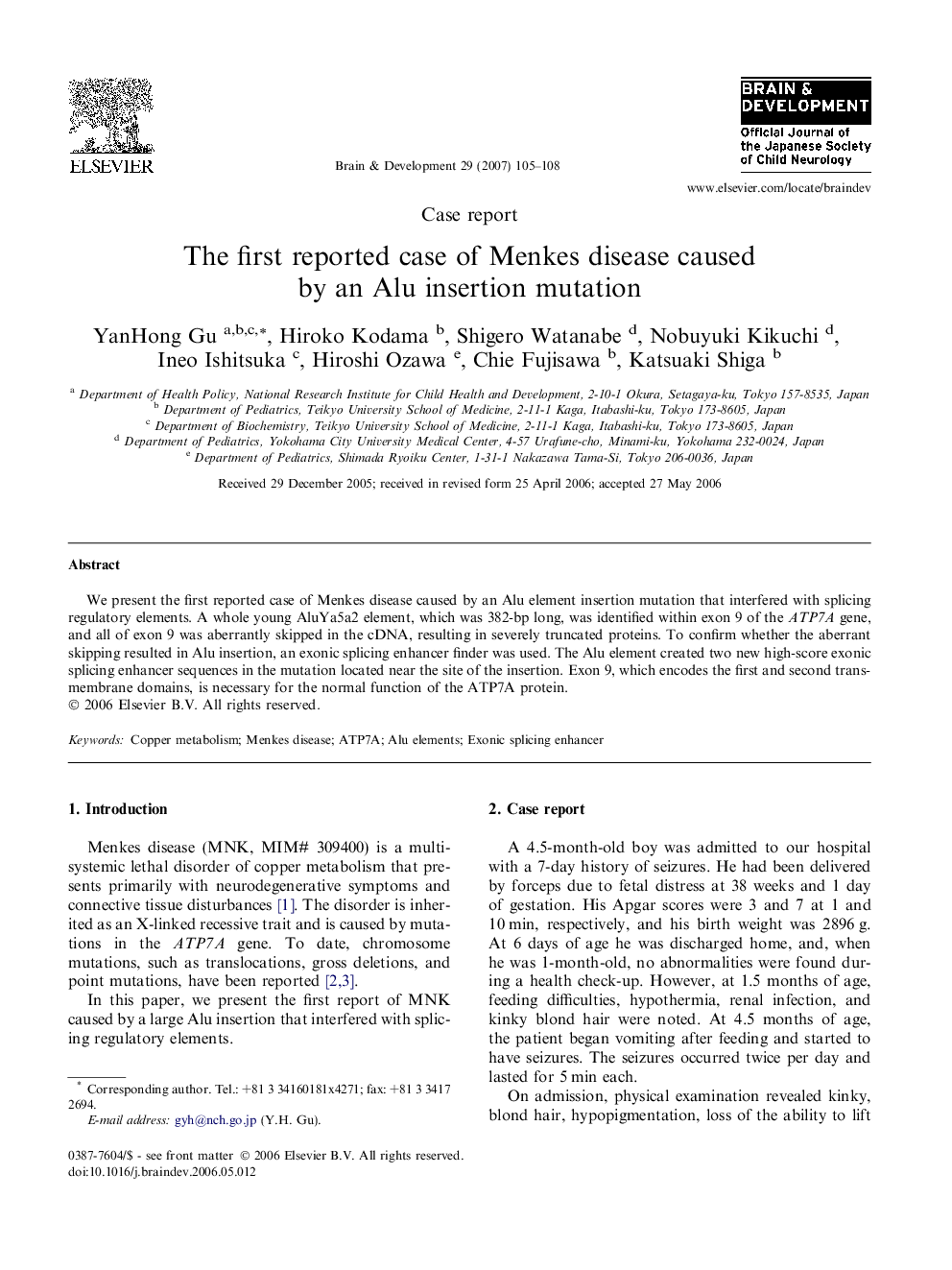| Article ID | Journal | Published Year | Pages | File Type |
|---|---|---|---|---|
| 3038550 | Brain and Development | 2007 | 4 Pages |
Abstract
We present the first reported case of Menkes disease caused by an Alu element insertion mutation that interfered with splicing regulatory elements. A whole young AluYa5a2 element, which was 382-bp long, was identified within exon 9 of the ATP7A gene, and all of exon 9 was aberrantly skipped in the cDNA, resulting in severely truncated proteins. To confirm whether the aberrant skipping resulted in Alu insertion, an exonic splicing enhancer finder was used. The Alu element created two new high-score exonic splicing enhancer sequences in the mutation located near the site of the insertion. Exon 9, which encodes the first and second transmembrane domains, is necessary for the normal function of the ATP7A protein.
Related Topics
Life Sciences
Neuroscience
Developmental Neuroscience
Authors
YanHong Gu, Hiroko Kodama, Shigero Watanabe, Nobuyuki Kikuchi, Ineo Ishitsuka, Hiroshi Ozawa, Chie Fujisawa, Katsuaki Shiga,
